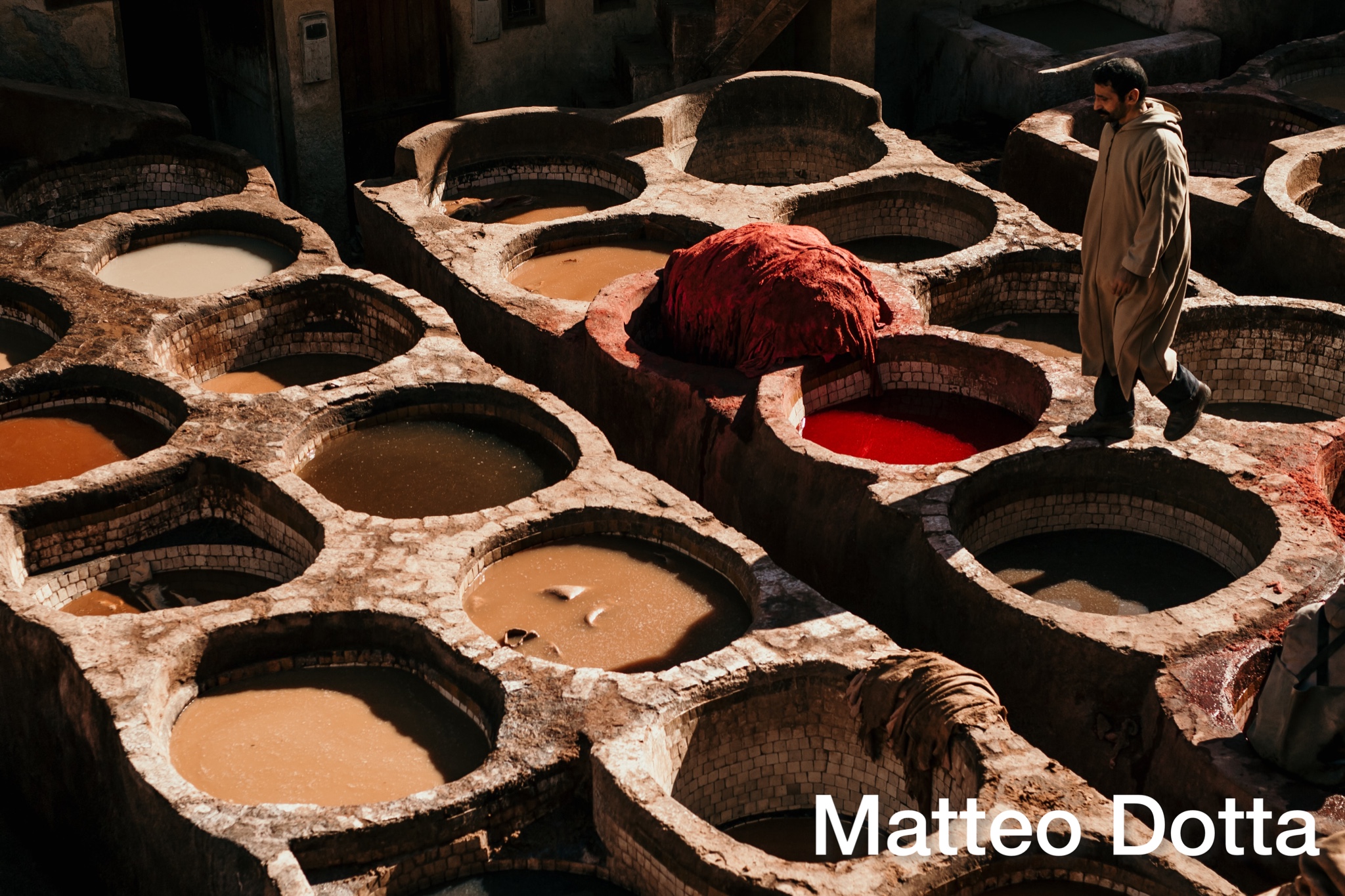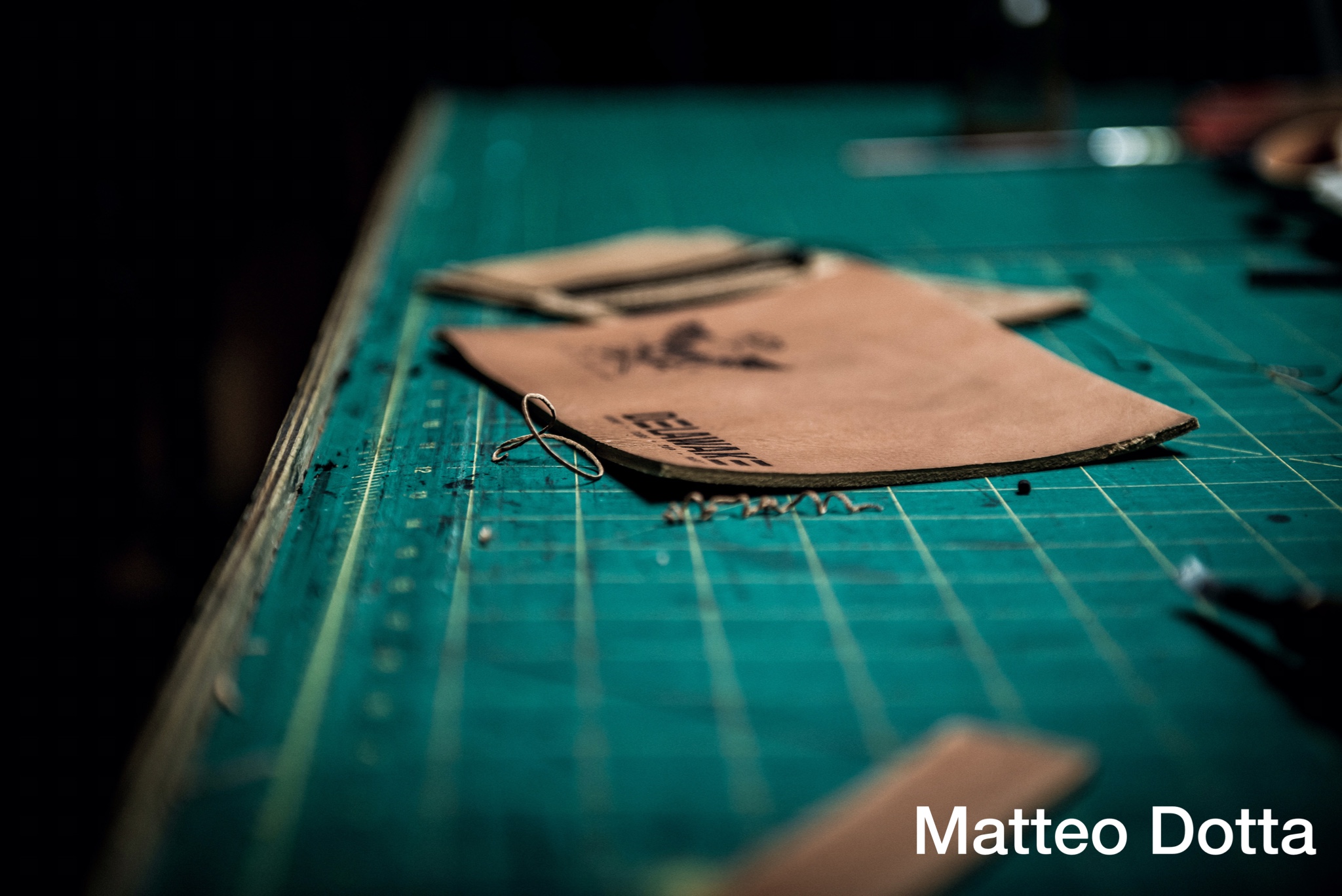The “leather tanning” is considered, as the processing of stone and wood, one of the oldest activities in history.
The first evidence is attributed to the Palaeolithic age, which is about ten thousand years ago when man began to use the skin of killed animals to cover themselves against the weather and for other uses such as the construction of tents or to cover tools.
Already at the time one of the main problems concerning the use of leather was that of organic decomposition and its deterioration once the animal was skinned.
To avoid this, at first, the hides were dried in the sun and exposed to smoke until the moment when it was discovered that, for better conservation, it was necessary to carry out a process not yet known at that time, but which was later identified with the term “tanning”.
The first types of tanning consisted of the treatment of the skin at the first stage after skinning, i.e. rough, using the brain material of the same animal, or by immersing the leather inside watertight water containing mostly oak or acacia bark, rich of tannins.
This particular type of processing was developed and perfected thanks to the interest of ancient populations, such as the Sumerians, the Egyptians, the Greeks, and the Romans.
In Greece, tanning became a very relevant practice, in fact from 500 to 300 BC. the first places where leather was worked, a material highly requested by armies for clothing and weapon cover, arose.
The Romans also had an important role in this regard, as they were among the first peoples to produce leather footwear and accessories on a large scale, and then distribute them throughout the empire.
1850 and Chemistry
The tanning process, which for centuries remained almost unchanged, saw a real revolution after 1850, thanks to the progress of the chemical sector.
In 1853, Hilten Cavallis, a Swedish pharmacist, patented a type of tanning using chromium salts, and in 1884 Augusto Shultz, invented a tanning procedure called “two bath”, which improved its performance and yield.
Later, the American Martin Dennis, in 1893, perfected this method and introduced the “one bath” procedure, from then on, the so-called chrome tanning became the predominant activity, almost completely replacing the previous vegetable tanning .
This whole process was perfected by using rotating drums, i.e. large wooden containers in which the hides, once immersed in mass, are treated through the introduction of chemicals and plenty of water.
It was precisely the close collaborations with the chemical and mechanical industry that allowed an initial artisan sector, such as the tanning industry, to become one of the most important and specialized industries in the panorama of the time.
Between the beginning of the First World War where tanning companies were closed due to the conflict and after the end of the Second World War the sector started again with companies concentrated in some areas, Veneto, Tuscany, Lombardy, and Campania but still at the artisan level.
Last centurty
From the 1960s to the present day in Italy there has been an increase in the industrialization of the sector and production with a consequent increase in the use of raw hides from the largest meat producers in the world.
In view of the fact that slaughterhouses are usually located far from the areas where the tanneries are present, the conservation of the hides is a very important factor and must be carried out as quickly as possible and consists in creating conditions inside the leather that make it impossible to development of bacteria and microorganisms that produce rot enzymes.
The most used methods are salting, drying, and cold storage.
Upon the arrival of the hides in the tannery warehouses, they begin a rather long and complex tanning process, basically a chemical process consisting of several phases interspersed with mechanical operations.
All chemical operations are carried out with the use of water in the drums the typical tannery machine.
Water and chemicals are introduced into the drum, which rotates around its axis.
Initially, the drums were simple wooden cylinders, today and a complex computer-controlled machine, with the possibility of regulating the introduction of water, regulating speed and direction of rotation, opening, and closing of the doors, the introduction of chemical products, temperature regulation.
Today it is possible to carry out the so-called processing recipe automatically, avoiding errors due to manual skills.
The dimensions of the drums vary according to the processing phase and can reach 4m X 5m.
The Process
The tanning process is quite long and complex and can be divided into:
Riviera
Tanning
Re-tanning-dyeing
Finishing
Riviera operations are those chemical and mechanical treatments that precede the actual tanning and have the function of preparing the raw leather under the right conditions to receive the tanning substances.
The tanning process represents the most important phase of the entire production cycle, as it allows to transform leather from organic and putrescible material into a non-degradable product. Once tanned, the leather is also called leather.
The retanning-dyeing aims to improve certain qualities of the skin such as the softness and firmness of the flower.
Dyeing is one of the most delicate phases of the cycle and serves to give the leather the desired color which will then be slightly modified in the last finishing phase.
With the Fat, the skin is treated to acquire properties such as softness, water repellency, breathability, and elasticity.
Finishing is a set of processes performed on dry leathers in order to protect and improve their appearance.
Conclusion
As we have seen, the tannery is still today, as in prehistory, an example of a circular economy that transforms and enhances the production waste of the most important food industry that would otherwise be destined for disposal or even worse to be buried and transforms them into products and transforms into useful and durable products for various sectors such as Automotive, Furniture, Leather and Footwear.



